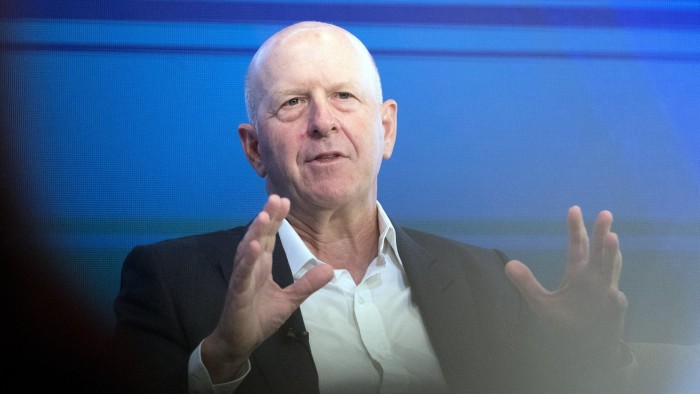Unlock the Editor’s Digest for free
Roula Khalaf, Editor of the FT, selects her favourite stories in this weekly newsletter.
Two years ago, it was hard to think of a Wall Street boss under more pressure than David Solomon. The Goldman Sachs chief was wrestling with an abundance of problems, from a failed attempt at consumer banking to a wave of real estate losses. Solomon’s DJ-ing hobby, lavish bonuses, unhappy juniors and private jet habit hadn’t helped.
Yet for all the tribulations, Solomon has survived — and thrived. On Wednesday, Goldman reported a 12.8 per cent return on equity for the second quarter of 2025, more than triple what it was making in the dark days of summer 2023. It juiced its quarterly dividend by a third. Out of a pack that also includes JPMorgan, Morgan Stanley, Citigroup and Bank of America, Goldman has been the best two-year investment.
Memories are short when profit is ample. That is the case now, thanks to a revival in trading and investment banking, where Goldman rules. Revenue from flipping stocks and bonds grew 22 per cent year on year. On a rolling four-quarter basis, Goldman is making double what it did in 2019, before the pandemic first pumped up trader-friendly volatility. Its equities revenue in the latest quarter was the highest on record.
Other shifts too have benefited Solomon’s bankers. The rise of private credit and non-public companies favours the kind of creative financing for which Goldman is known. But an internal focus on short-term lending to fund clients trades is paying off. While the “one Goldman Sachs” mantra Solomon has pushed from the get-go verges on cringe-making, there are real benefits to getting teams to drum up business together.
The relative good fortune of chief rival Morgan Stanley is also less of an issue than it was. Its concerted push into wealth management, some well-timed acquisitions, and a seamless CEO handover from James Gorman to Ted Pick put space between the two banks in valuation terms.
Today, however, there’s little in it. Morgan Stanley gets more profit per dollar of assets, because of its greater emphasis on managing customers’ wealth rather than holding risk on its own balance sheet. But measured by returns on equity, the gap is small: Goldman is running at 14.8 per cent this year so far, compared with its counterpart’s 15.7 per cent.
Can Solomon keep it up? Investment banking should continue to revive. The bar is high, though: Goldman’s stock market valuation of about two times forecast book value is the highest it has been in at least 15 years. As for CEO stature, the precedent to beat is Lloyd Blankfein, who retired in 2018 after leading Goldman for 12 years. Solomon is approaching seven.
On one yardstick, he already wins. Seven years into Blankfein’s tenure, which included the 2008 financial crisis, a shareholder was roughly 20 per cent better off, assuming they reinvested their dividends, LSEG data shows. Under Solomon, they have more than tripled their money. The Goldman boss may lack his predecessor’s smoothness, but investors probably value effectiveness over charm anyway.
john.foley@ft.com
https://www.ft.com/content/9abfebb8-afb4-4bed-9386-5199ef9e1dc1


